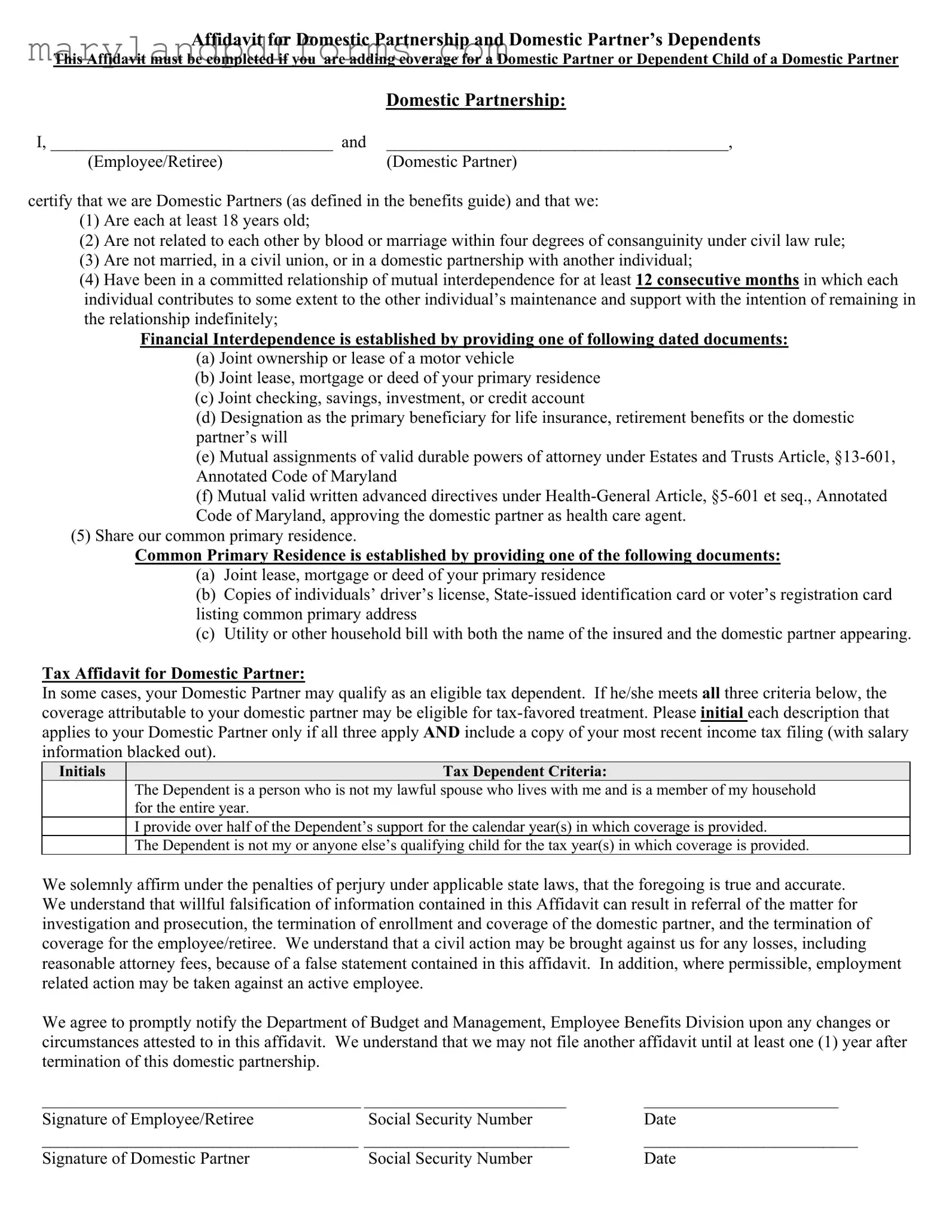The Maryland Domestic Partnership form is a legal document that allows individuals in a committed relationship to certify their partnership status. It is used to enroll a domestic partner in health benefits and may also include dependents of the domestic partner. This form requires both parties to affirm their relationship and provide necessary documentation to establish eligibility.
To be eligible, both individuals must be at least 18 years old and not related by blood or marriage within four degrees of consanguinity. They must not be married or in another domestic partnership. Additionally, they should have been in a committed relationship for at least 12 consecutive months, demonstrating mutual support and financial interdependence.
What documentation is required to establish financial interdependence?
To prove financial interdependence, one of the following documents must be provided:
-
Joint ownership or lease of a motor vehicle
-
Joint lease, mortgage, or deed of the primary residence
-
Joint bank accounts or credit accounts
-
Designation as the primary beneficiary on life insurance or retirement benefits
-
Mutual assignments of durable powers of attorney
-
Mutual valid written advance directives approving the partner as a health care agent
How can we establish a common primary residence?
Common primary residence can be established by providing one of the following documents:
-
Joint lease, mortgage, or deed of the primary residence
-
Driver’s licenses or state-issued IDs showing the same address
-
Utility bills or household bills with both names appearing
What are the tax implications for a Domestic Partner?
If certain criteria are met, a domestic partner may qualify as an eligible tax dependent. The criteria include living with the employee for the entire year, receiving over half of their support from the employee, and not being someone else's qualifying child. It's essential to initial each applicable criterion on the form and provide a copy of the most recent income tax filing.
Providing false information on the affidavit can lead to severe consequences, including termination of enrollment and coverage for the domestic partner. It may also result in legal action for any losses incurred due to the false statement, including attorney fees. Employment-related actions may be taken against active employees as well.
No, once a domestic partnership is terminated, a new affidavit cannot be filed until at least one year has passed since the termination date. This rule ensures that the partnership status is legitimate and not filed in quick succession.
What documentation is needed for dependents of the Domestic Partner?
To add a dependent of a domestic partner, specific documentation is required based on the relationship. This may include:
-
Official state birth certificates for biological or adopted children
-
Adoption papers for adopted children
-
Proof of residency for legal wards
-
Marriage certificates for step-children
It's crucial to provide accurate documentation to ensure eligibility for health benefits coverage.
What is the Sole Support Affirmation?
The Sole Support Affirmation is a declaration that confirms the domestic partner provides sole financial support for a dependent child who is not a biological or adopted child. This affirmation must be signed to validate the dependent's eligibility for health benefits.
